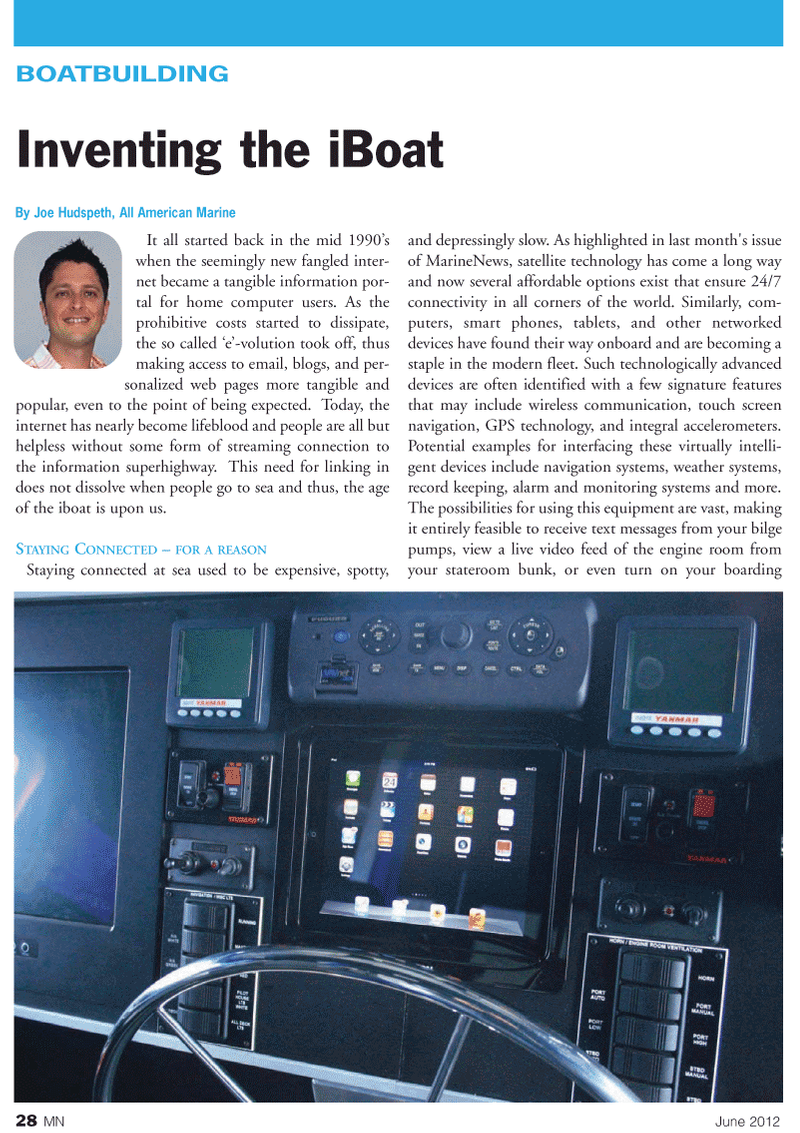
Page 28: of Marine News Magazine (June 2012)
Dredging & Marine Construction
Read this page in Pdf, Flash or Html5 edition of June 2012 Marine News Magazine
28MNJune 2012It all started back in the mid 1990s when the seemingly new fangled inter- net became a tangible information por-tal for home computer users. As theprohibitive costs started to dissipate, the so called e-volution took off, thus making access to email, blogs, and per-sonalized web pages more tangible and popular, even to the point of being expected. Today, the internet has nearly become lifeblood and people are all but helpless without some form of streaming connection to the information superhighway. This need for linking in does not dissolve when people go to sea and thus, the age of the iboat is upon us.STAYING CONNECTED? FORAREASON Staying connected at sea used to be expensive, spotty, and depressingly slow. As highlighted in last month's issue of MarineNews, satellite technology has come a long way and now several affordable options exist that ensure 24/7 connectivity in all corners of the world. Similarly, com- puters, smart phones, tablets, and other networked devices have found their way onboard and are becoming a staple in the modern fleet. Such technologically advanced devices are often identified with a few signature features that may include wireless communication, touch screen navigation, GPS technology, and integral accelerometers. Potential examples for interfacing these virtually intelli- gent devices include navigation systems, weather systems, record keeping, alarm and monitoring systems and more. The possibilities for using this equipment are vast, making it entirely feasible to receive text messages from your bilge pumps, view a live video feed of the engine room from your stateroom bunk, or even turn on your boarding BOATBUILDING By Joe Hudspeth, All American MarineInventing the iBoat

 27
27

 29
29
